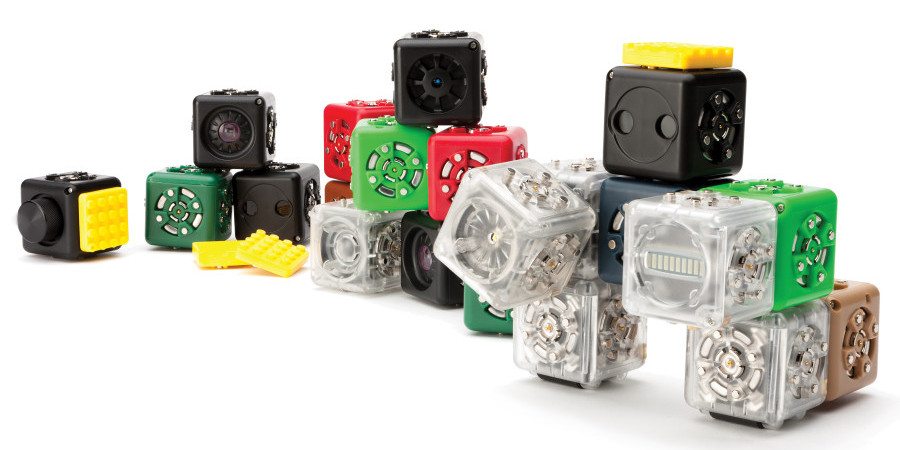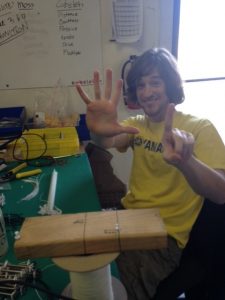 Not long after opening its doors, Modular Robotics of Boulder, Colorado found itself in crisis: every Friday an employee had been running to the corner store for a pair of six-packs, but now the company had expanded and not only was there no room in the fridge, but, “the six-packs went incredibly fast,” says Christie Veitch, Education Director at Mod Robotics.
Not long after opening its doors, Modular Robotics of Boulder, Colorado found itself in crisis: every Friday an employee had been running to the corner store for a pair of six-packs, but now the company had expanded and not only was there no room in the fridge, but, “the six-packs went incredibly fast,” says Christie Veitch, Education Director at Mod Robotics.
In the early life of a tech startup, desperate times call for decisive action and now, almost five years after their 2010 founding, a Kegerator sits in the corner. Just before the holidays it was nearly buried in cardboard boxes and tupperwares full of plastic pieces. Down a tight hallway where the Mod Robotics team had recently cut through the wall and into a vacated next-door space are the smashed-together bench style desks of the administrative and marketing team. After our meeting, Christie decided to avoid the hallway by going outside with me and then back into the building via another door.

But the real work of Mod Robotics is done the old-fashioned way: by elves working with screwdrivers and soldering irons. Here is Chip. He is a level VI elf. They’re no longer baking circuit boards in a fry pan, as did CEO Eric Schweikardt for his PhD project that became the company’s prototype. But after the boards are printed and the plastic pieces molded, the elves snap, screw and solder these pieces into Cubelets and MOSS robot building systems.
That’s the genius of Mod Robotics: the elves do the heavy building so that you don’t have to. Cublets are self-contained inputs and outputs that you and yours can magnet together into robots as big or small as your imagination. The black ones are sensors, the clear ones do things, and the colored ones think, or, you know, at least provide the backbone of logic.
The newer, MOSS system adds the structures of panels, wheels and various other connective bendy bits to Cubelet-like backbones, allowing you to make cars, creatures and other creations that look like real or imagined awesomeness. If you’re an educator or an education-minded parent, Mod Robotics also hosts free, downloadable lesson plans like 10 Cool Things to Do With Cubelets, 10 More Cool Things to Do With Cubelets, and the comprehensive MOSS Instroduction to Robotics Unit.
Christie says that in addition to demonstrating the basics of robotics – sensors, effectors, logic – Mod Robotics hopes to show the power of emergent behavior.
“Each one of these things is just a thing,” says Christie, eloquently, “but when you put them together, you can see how they create complex behaviors – a robot lighthouse that knows to come on in the dark or a steering robot that knows to slow down before it crashing into stuff.”
My experience of chucking my kids (8 and 6) into a pile of Cubelets is that offspring tend to be immediately engaged in a way that creates their own emergent understanding. At first my kids snapped stuff together randomly and semi-noticed what happened, and then their ideas got more goal-directed.
“I want to make a car,” said Leif, 8, and with some experimentation, he was eventually able to do just that.
“I want to make a robot dinosaur that breathes fire at daddy’s butt,” said Kestrel, 6, and now a couple weeks later she remains steadfastly undeterred.
For more on the Modular Robotics manifesto of simple pieces from whence arise complex behaviors, check out CEO Eric Schweikardt’s talk at TedX Front Range, here:



